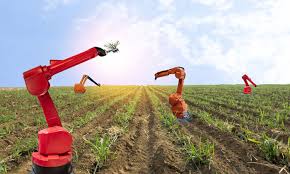
For thousands of years, farming has been the backbone of human civilization. Yet, as the global population climbs past 8 billion, the demand for food is putting tremendous pressure on traditional agriculture. At the same time, labor shortages, climate challenges, and rising costs are forcing farmers to look for alternatives. Enter agricultural robots—machines designed to plant, water, weed, and even harvest crops. But the big question remains: will robots replace farmers in the next decade?
1. The Rise of Agricultural Robotics
From robotic milking machines to autonomous tractors, farms are becoming more high-tech. Some of the most notable innovations include:
- Autonomous Tractors: GPS-guided vehicles that can plow, plant, and fertilize fields without human drivers.
- Drone Farming: Aerial drones that monitor crop health, spray pesticides, and optimize irrigation.
- Robotic Harvesters: Machines capable of picking fruits and vegetables with precision, reducing waste.
- Weeding Robots: AI-powered robots that identify and remove weeds without harming crops.
These technologies promise to make farming more efficient, precise, and sustainable.
2. Why Robots Are Entering the Fields
Several global challenges are accelerating the adoption of farming automation:
- Labor Shortages: Fewer people are choosing farming as a career, leaving gaps robots could fill.
- Climate Change: Precision farming helps conserve resources like water and fertilizer.
- Food Demand: By 2050, food production needs to increase by nearly 70%—automation may be the only way to keep up.
- Cost Efficiency: Robots can work 24/7, never tire, and reduce long-term expenses for farmers.
3. The Benefits of Robotic Farming
- Increased Productivity: Robots can complete tasks faster and more consistently than humans.
- Sustainability: Smart machines optimize resource use, reducing environmental damage.
- Health & Safety: Less reliance on chemical-heavy farming methods as precision robotics minimizes waste.
- Year-Round Operation: Unlike human workers, robots don’t need rest, making them ideal for intensive farming cycles.
4. The Challenges Robots Face
Despite the promise, several obstacles stand in the way of robots taking over farms entirely:
- High Costs: Advanced machines can cost hundreds of thousands of dollars, out of reach for small-scale farmers.
- Technical Limits: Robots still struggle with delicate crops like strawberries, which require human-like touch.
- Maintenance: Farming environments—mud, rain, uneven terrain—can damage machines quickly.
- Job Displacement Concerns: Widespread adoption could reduce human agricultural employment.
5. Will Farmers Disappear?
It’s unlikely that robots will completely replace farmers in the next decade. Instead, the future looks more like a partnership: farmers using robots as assistants rather than competitors. While machines will take over repetitive and labor-intensive tasks, human farmers will still be essential for:
- Decision-making
- Managing technology
- Understanding complex ecosystems
- Responding to unpredictable natural events
Final Thoughts
The next decade won’t bring the end of farmers—it will bring the rise of “robot-assisted farming.” Robots are set to handle the hard labor, while humans focus on strategy, sustainability, and innovation. Rather than replacing farmers, robots could empower them to meet the world’s growing food demands in smarter, greener ways.